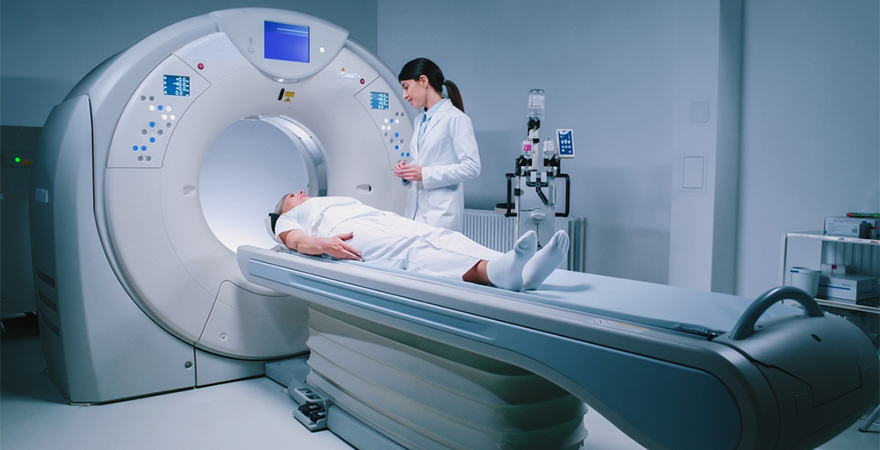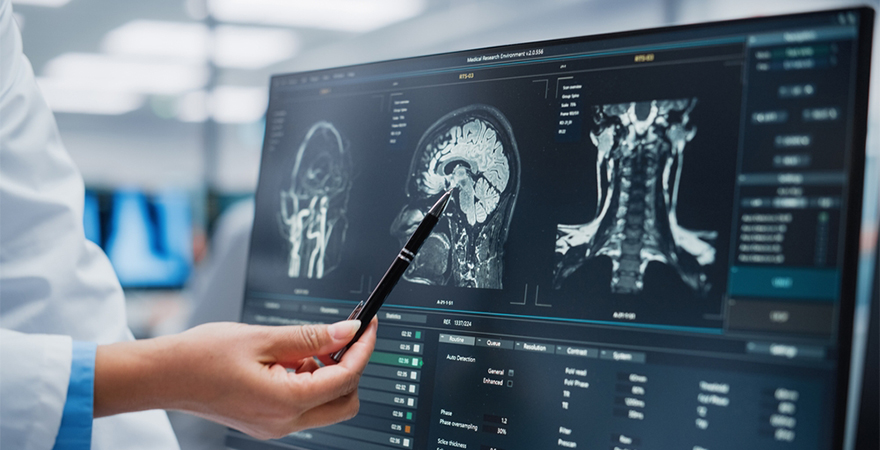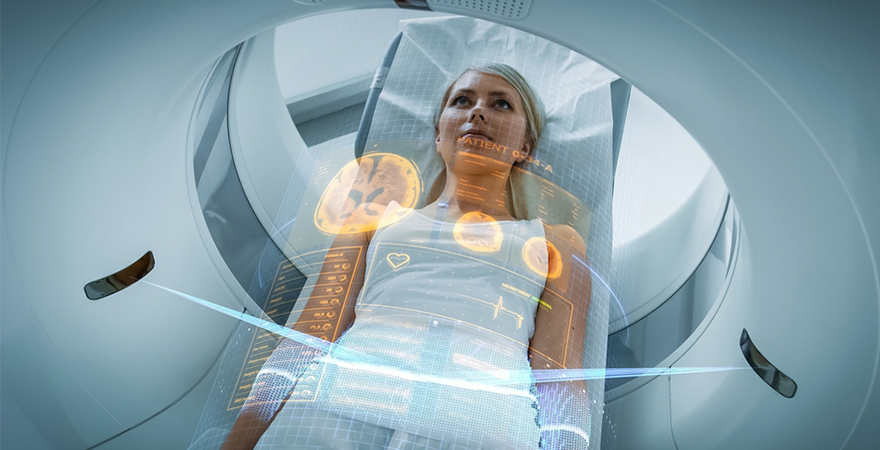Synergex Med
April 17, 2024
Are you ready to learn a bit about the tests that will help doctors better understand the type of treatment you need?
In this instance, we’ll delve into a widely used imaging technique, understanding its purpose, functioning, diagnostic applications, and what to expect when scheduling one of these tests.
Our mission is to clear your doubts and provide you with the necessary confidence to calmly face the scheduling process.
Let’s see our topics for the blog!
What does an MRI mean?
Magnetic Resonance Imaging, commonly known as MRI, is a diagnostic and deep imaging technique that has revolutionized the way doctors explore the interior of the human body.

Since its invention in the 1970s, MRI has evolved into a crucial tool in modern medicine, providing detailed and non-invasive images that aid in the diagnosis and treatment of a wide range of medical conditions.
But how does an MRI work?
In scientific terms, the operation of MRI is based on the interaction between magnetic fields and hydrogen nuclei in the body’s tissues.
This means that when a person undergoes an MRI, they are placed inside a powerful magnetic field generated by the scanner.
This magnetic field aligns the hydrogen nuclei in the body, which are abundant in water and fat.
Next, brief pulses of specific radio waves are applied to the area of the body being examined.
These radio waves will alter the alignment of the hydrogen nuclei, which emit signals detected by antennas inside the scanner.
Finally, these signals are processed by a computer to create detailed images of the body’s internal structures, which are then interpreted by radiologists or specialist doctors.

Will everyone need to get an MRI?
Well, it really depends. We can assure you that not everyone needs an MRI, as there is a wide variety of clinical situations to diagnose and evaluate different medical conditions.
One of the most common applications of MRI is in the diagnosis of neurological diseases, such as strokes, brain tumors, multiple sclerosis, and traumatic injuries to the head and spinal cord.
Furthermore, MRI is an invaluable tool in diagnosing musculoskeletal disorders, such as sports injuries, herniated discs, arthritis, and degenerative diseases like osteoarthritis.
It is also used to evaluate heart problems, such as heart diseases and abnormalities in blood vessels.
Other applications include visualizing internal organs such as the liver, kidneys, pancreas, and uterus, as well as detecting and staging cancer in various parts of the body.
Alright, we’ve gained a better understanding of the basic concept, functionalities, and of course, the types of patients who qualify for an MRI.
Now, it’s time to delve deeper into alternative procedures so that you can compare and assess whether it’s the best option for your case.
Are there Similar Exams or Other Imaging Methods?
In fact, there are! MRI itself is not an invasive process, but it can be tiresome to lie still or not talk during the procedure.
Additionally, it is important to remember that while MRI is a powerful imaging technique, there are other modalities of medical imaging used to diagnose medical conditions.
One of them is computed tomography (CT or CT scan), which uses X-rays instead of magnetic fields to create cross-sectional images of the body.
Although CT is excellent for visualizing bone structures and dense tissues, such as the lungs, MRI provides more detailed images of soft tissues and is especially useful in diagnosing neurological and musculoskeletal diseases.
Another medical imaging technique is ultrasound, which uses high-frequency sound waves to create real-time images of the interior of the body.
While ultrasound is safe and widely used, its image resolution may be limited compared to MRI, especially in areas where greater diagnostic accuracy is needed.
What to expect from an MRI procedure?
It’s time to come to the most sought-after part of these procedures, the basic guide, where you’ll see the duration and how an MRI exam generally unfolds. Ready?

How long does an MRI procedure last?
The duration of an MRI can vary depending on several factors, including the part of the body being examined and the type of images needed. Typically, an MRI can last between 15 minutes and an hour or more.
What can I expect from an MRI procedure?
The moment of truth, the time you’ve undoubtedly been waiting for, to understand how your process could unfold:
- The patient is placed on a table that slides into the scanner.
- The patient is instructed to remain still to obtain clear images.
- In some cases, a contrast agent may be administered to enhance visualization of certain structures.
- It is checked whether the patient has metal implants, such as pacemakers or prosthetics, to avoid interference.
- During the MRI, the patient is provided with ear protection due to the noise generated by the scanner.
As you can see, Magnetic Resonance Imaging (MRI) is an invaluable tool in modern medicine, allowing doctors to visualize the internal structures of the body with unprecedented clarity.
Since its introduction decades ago, MRI has revolutionized the way a wide range of medical conditions are diagnosed and treated, providing crucial information to guide clinical decisions and improve patient care.
Although there are other modalities of medical imaging, at Synergex Med we utilize MRI to provide optimal and personalized care to our clients.
MRI stands out for its ability to offer detailed images of soft tissues and its versatility in a wide variety of clinical applications.
With its ongoing innovation and technological development, MRI will continue to play a fundamental role in advancing medicine and improving human health. And you? Are you ready to trust in tools that will improve your quality of life?


